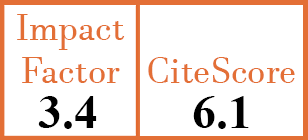Full Papers
Ultrasound versus low-field magnetic resonance imaging in rheumatic diseases: a systematic literature review
E. Aleo, F. Barbieri, L. Sconfienza, G. Zampogna, G. Garlaschi, M.A. Cimmino
CER7056
2014 Vol.32, N°1 ,Suppl.80
PI 0091, PF 0098
Full Papers
Free to view
(click on article PDF icon to read the article)
PMID: 24528870 [PubMed]
Received: 16/10/2013
Accepted : 02/12/2013
In Press: 17/02/2014
Published: 19/02/2014
Abstract
OBJECTIVES:
US and MRI play a significant role in the diagnosis of rheumatic diseases and in monitoring treatment response. This systematic review summarises and evaluates available evidence on the value of low-field MRI compared to US in rheumatic diseases.
METHODS:
A computerised literature search was conducted by a single reviewer to identify relevant published articles on the diagnostic accuracy of low-field MRI compared to US in rheumatic diseases. The literature search comprised the period from January 1998 to September 2013.
RESULTS:
The search yielded a total of 1055 articles that were reviewed by title or abstract; finally, 23 articles fulfilling all inclusion criteria were included in the analysis. Our results show that low-field MRI is probably more sensitive than US in the detection of erosions, due to its higher multiplanar capacity. In OA there was a good correlation between US and MRI measurements for cartilage thickness and for effusion in the superior and in the lateral recesses.
CONCLUSIONS:
There are still few studies comparing US and low-field MRI for their diagnostic and prognostic value in rheumatology and it is currently difficult to draw any firm conclusions on the preferred imaging technique to answer specific clinical questions.


